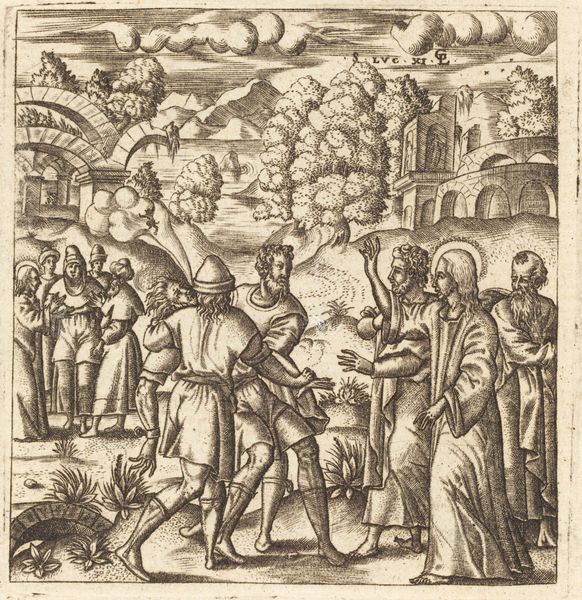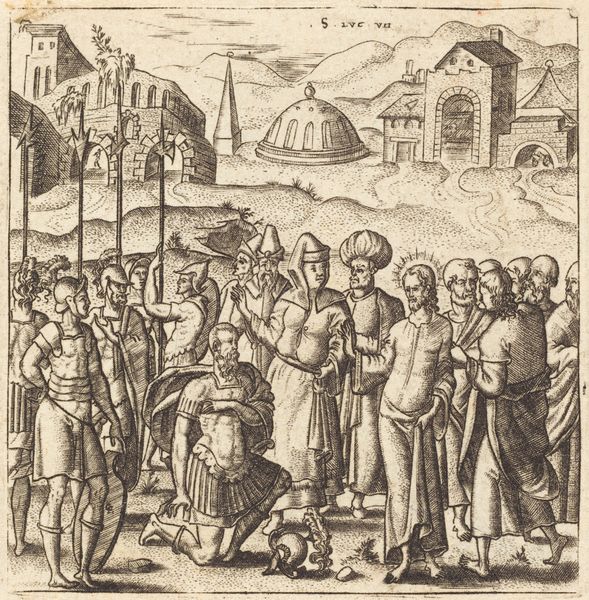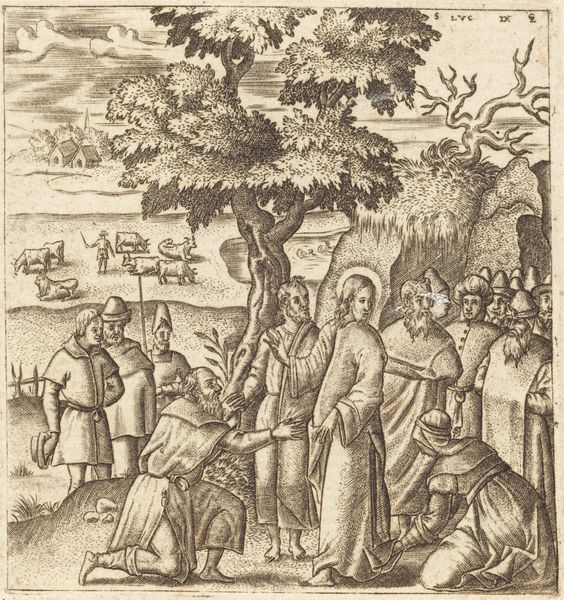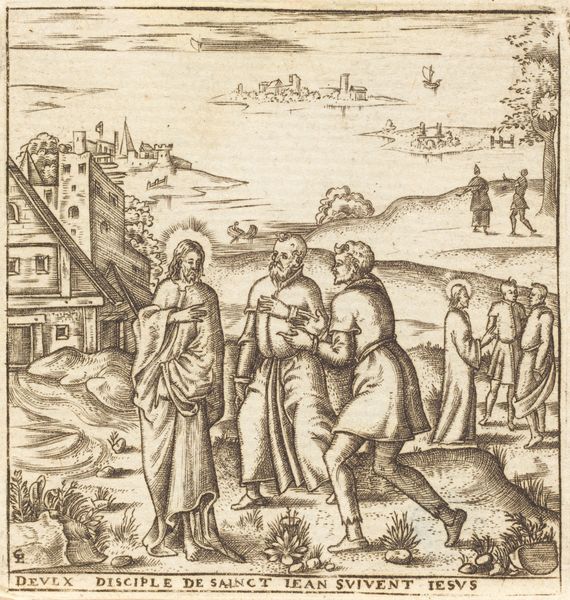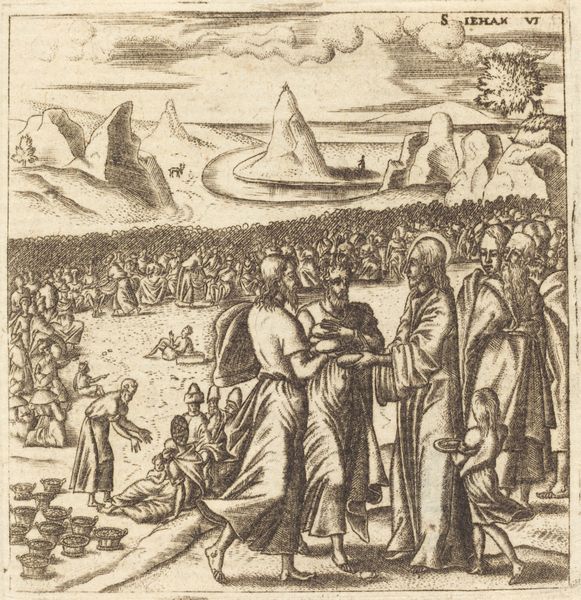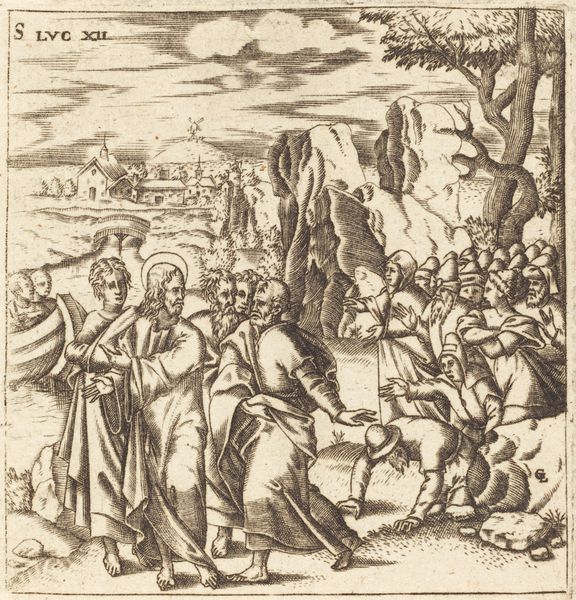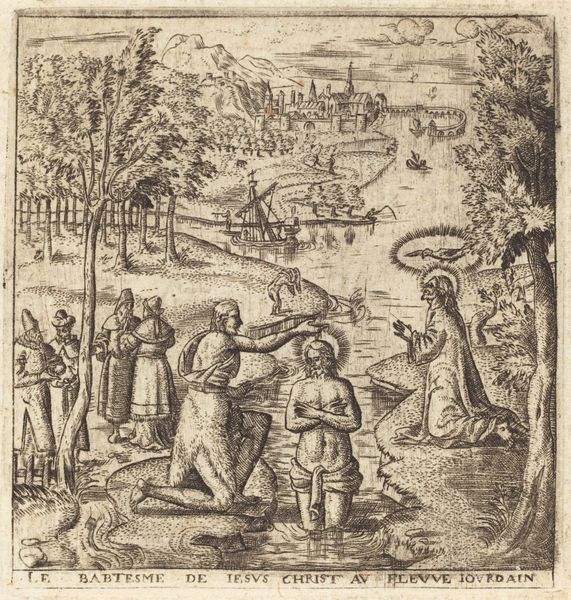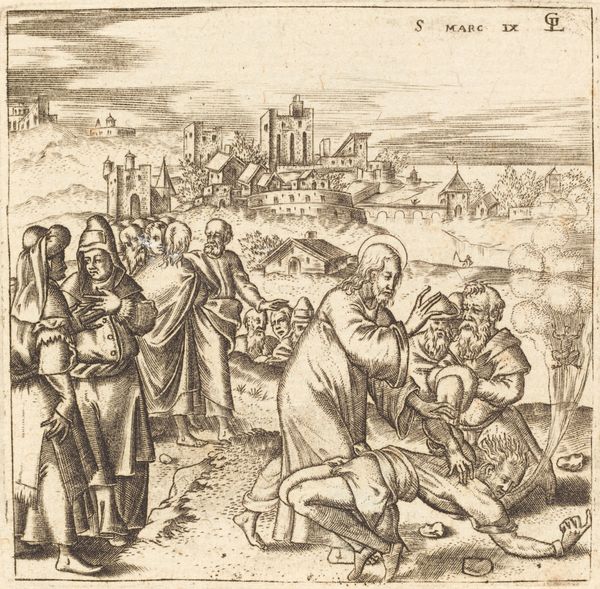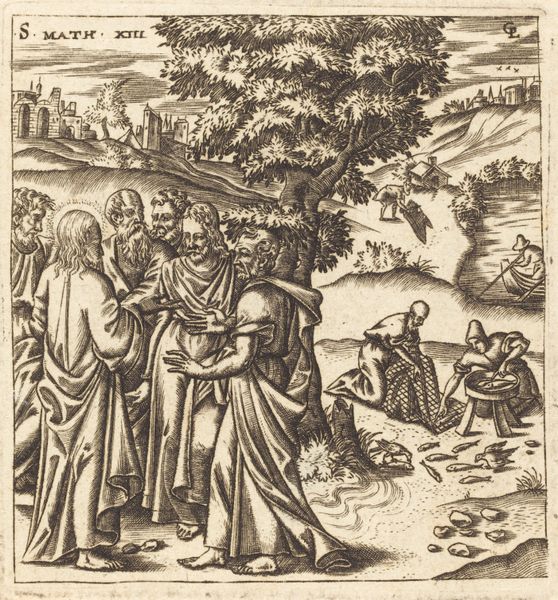
drawing, print, intaglio, paper, ink, engraving
#
drawing
#
narrative-art
# print
#
intaglio
#
landscape
#
mannerism
#
figuration
#
paper
#
ink
#
history-painting
#
engraving
Copyright: National Gallery of Art: CC0 1.0
Léonard Gaultier created "The Mission of the Seventy," using engraving techniques that were typical of the late 16th and early 17th centuries. The composition is structured by meticulously etched lines that define form and space in a detailed narrative scene. Notice how the scene unfolds across a receding landscape, from the foreground figures to the distant city. Gaultier uses line and perspective to create depth, drawing the viewer's eye through the composition. The detailed rendering of the figures, with their draped clothing and expressive gestures, contrasts with the more schematic representation of the landscape. This contrast is typical of the period, where clarity of the message was prioritised. The engraving, as a medium, lends itself to replication and dissemination of ideas. Consider how this work fits within the broader context of religious art and the transmission of doctrine in the early modern period. It is an artefact of cultural and spiritual communication, inviting us to consider its role in shaping historical perception.
Comments
No comments
Be the first to comment and join the conversation on the ultimate creative platform.
